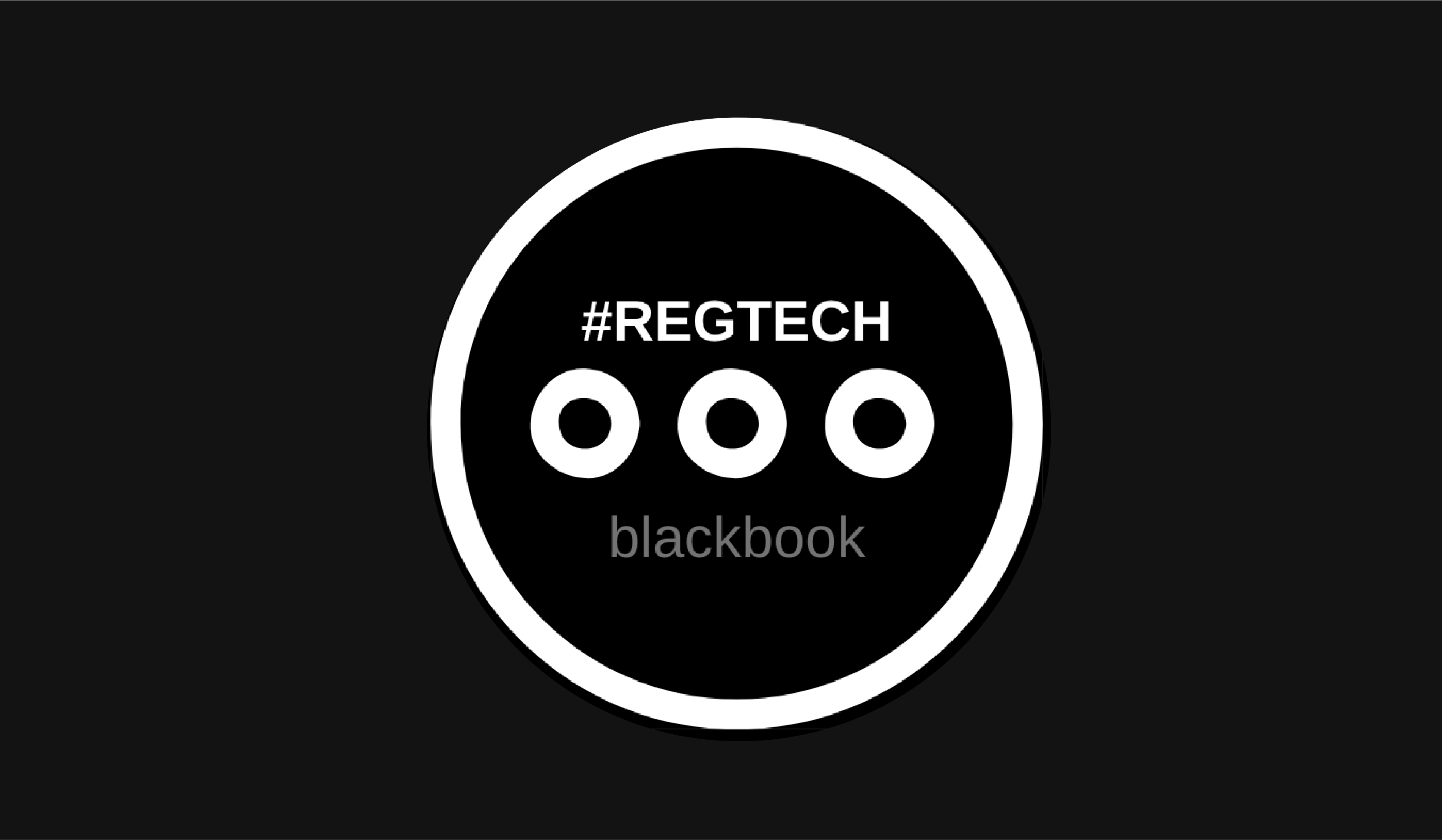Blanco’s contribution to RegTechBlackBook The Sequel

RegTechBlackBook The Sequel is a collection of in-depth insights and profound knowledge from financial service professionals across the globe. It provides a holistic overview of developments in the RegTech space and fuels the narrative of how technology can help to regulate financial institutions and deliver better products or services for their end customers. Blanco’s contribution to RegTechBlackBook The Sequel focuses on what WealthTech is, the importance of greater collaboration for WealthTech to flourish, and how it can contribute to financial inclusion.
What WealthTech, RegTech is and how it can contribute to financial inclusion
WealthTech brings the promises of the fourth industrial revolution to wealth accumulation, investment and retirement companies. These sectors benefit from improved technology, though WealthTech would flourish even more if better collaboration were to occur. This is needed so that WealthTech can contribute even better to financial inclusion.
This is WealthTech
Wealth technology is about developing technology to manage or optimise investments and wealth accumulation in an innovative way; for example, to build up a pension. In fact, WealthTech handles wealth in the same way that FinTech handles the money we use every day. WealthTech falls under the umbrella of fintech; after all, it is a form of financial technology.
Well-known examples of WealthTech are robo-advisors. These algorithms, for example, use artificial intelligence to provide automated and optimized investment advice, taking into account a person’s investment goals and strategy. It was expected that this should make wealth management more scalable, as automation would make human contact unnecessary. The question is, however, whether High Net Worth Individuals are waiting for such an approach. After all, investment decisions are so urgent that personal contact is still often preferred and even considered necessary. Experts, therefore, expect that robo-advice will not make personal advice superfluous.
Digital brokerage platforms like Robinhood are another well-known – can I say infamous? – example of WealthTech. Through a platform, it becomes possible to invest in (digital) assets. What distinguishes some of these platforms from other providers is their social component. The investments of friends or acquaintances on the platform are also visible on the platform. This is where the social component of Facebook and the financial component of the stock market seem to intersect. Platforms where people make small investments over longer periods of time, such as Stash, are also worth mentioning. Indeed, they allow individuals to build wealth and secure retirement. That’s how WealthTech can contribute to financial inclusion.
Next steps for WealthTech: technology improves
WealthTech innovations have been on the rise in recent years and are making an increasing impact. Startups, applications and concepts stemming from WealthTech have also changed the way wealth management and investment firms operate. Innovations such as Big Data and AI have become usable tools for companies in these sectors, finally giving them access to the promises of the fourth industrial revolution: cost savings, more effective ways of working, opportunities to scale up faster, more accurate forecasting, new insights and more possibilities for optimal customer contact.
In recent years, legislation within the wealth segment has become stricter and both large (banks) and small (asset managers) financial institutions have to comply with new regulations, such as MiFID in Europe. More and more WealthTech companies are therefore not only focusing on investing secularly but are offering services that help financial institutions meet their regulatory obligations (and more).
In recent years, legislation within the wealth segment has become stricter and both large (banks) and small (asset managers) have to comply with new regulations, such as MiFID in Europe. More and more WealthTech companies are therefore not only focusing on investing secularly, but are offering services that help financial institutions meet their regulatory obligations (and more).
Investments in new technology in WealthTech are the order of the day. Technology is constantly evolving, offering more opportunities for both traditional parties and challengers. In this way, WealthTech contributes to the progress of financial services. There are a number of trends in WealthTech that I would like to highlight that illustrate this development. These are as follows:
Platform as a Service
These cloud platforms enable companies to develop and run new services – such as WealthTech applications – without having to worry about the infrastructure required to do so. With the rise of Platforms as a Service (PaaS) and the ecosystems of providers and users, innovations have become more widely available. PaaS ensures that innovation can take place even faster.
Big Data and more insights
There are more and more applications for Big Data. This makes it easier to process more information and makes predictions from asset managers, for example, more accurate. This means that the work of investors, asset managers and investors become more reliable and effective, which benefits their services.
Data management is more urgent
Data from asset managers not only serves to reach clients but also includes legal documents and data to formulate investment goals. Clients expect more tailored advice and that requires more data. As a result, advisors have more data than ever. How they manage, protect and ensure compliance with this data is therefore more urgent than before they gained access to these new WealthTech technologies.
Cost saving ensures inclusion
Wealth technology and advice from financial advisors used to be reserved for a select few. New technology in WealthTech is ensuring that this changes permanently. Whether through automated advice or automating standard processes, WealthTech ensures that cost savings occur. By passing on these cost savings to the end user, these financial products become more widely available.

Next steps for WealthTech: collaboration required
Technological advances in WealthTech are necessary and have already proven to benefit companies and their clients. However, let’s not get hung up on technology. Anyone who has been involved in a change process knows that it is not only about having the right tools at your disposal. Successful innovation starts with a goal, such as serving customers better, more effective marketing, better advice, a more scalable operation, etc. To reach this goal, tools are required and the organization needs to be convinced of the usefulness of new software, platforms or ways of working. First of all, internal alignment is needed.
There is also another condition under which innovations within WealthTech can only really flourish. That is the decision to work together, by sharing data or insights for example. Collaboration is certainly not an innovation, as evidenced by the associations, chain partnerships, consultations, formal and informal networks that abound in our industry. It is an ecosystem approach that makes a sector successful, not an ego-driven mentality. By working together, it becomes possible to learn from each other’s mistakes. It is also easier to tackle challenges together; by making joint purchases for example, which saves costs. Addressing issues with stakeholders, such as regulators and legislators, is easier as a group. Especially since the sector is subject to continuous change, collaboration is not a luxury but a requirement for further growth. Some alignment is also required outside the organisation.
Benefits of WealthTech: financial inclusion
Many consumers question the traditional ways of pension accrual and prefer to take matters into their own hands. Take into account that more and more consumers choose or are forced to choose to work as a flex worker, self-employed person or entrepreneur. As a result, traditional pension funds are not available to everyone. It is therefore not a moment too soon that WealthTech is delivering on its promises. Changes brought about by WealthTech can ensure that an essential financial service, building up a pension, becomes accessible to more consumers. This will not only improve confidence in the traditional financial system but also, not surprisingly, the stability of the democracies and countries in which these consumers find themselves.
Financial inclusion, as it is known, is about ensuring access to financial services and concerns us all. Yet it appears that financial inclusion has not yet been fully realised. In Europe alone, there were almost 40 million Europeans who had no or insufficient access to banking services in 2016. This appears to particularly affect migrants in Europe. Residents of Eastern Europe also appear to have insufficient access to banking services. This applies to more than one in ten Poles and Greeks, as well as more than one in six Slovaks and Latvians. Morocco is the ‘most unbanked country’ in the world, where 71 percent of residents have no access to banking services. WealthTech can provide the answer to these challenges and help provide financial services.
Conclusion
There are compelling examples (such as Knox) that show that WealthTech contributes to financial inclusion. This requires continued investment into improving technology in this promising domain. Collaboration, although less innovative than AI, is also proving to be an essential strategy to achieve this goal. As Blanco, we look forward to work with the rest of the supply chain, and anyone else who feels called upon to do so, on financial inclusion.